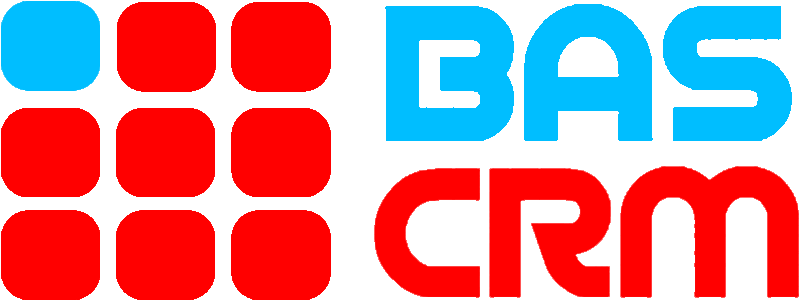Description

vtenext

Rollio
Comprehensive Overview: vtenext vs Rollio
To provide a comprehensive overview of vtenext and Rollio, let's break down the required components:
vtenext
a) Primary Functions and Target Markets
Primary Functions: vtenext is a CRM (Customer Relationship Management) platform combined with a BPM (Business Process Management) system. Its core functionalities include customer data management, sales and marketing automation, customer support, and service management. The platform emphasizes process management, allowing businesses to integrate CRM with their existing business processes to automate workflows and enhance productivity.
Target Markets: vtenext primarily targets small to medium-sized enterprises (SMEs) and larger organizations that require a customizable CRM solution with integrated business process management capabilities. Industries that commonly use vtenext include retail, finance, manufacturing, and service sectors that need to align their customer management strategies with operational processes.
b) Market Share and User Base
vtenext is a niche product with a focus on integrating CRM with business process management. Therefore, while it may not have the vast market penetration of more generalized CRM solutions, it occupies a unique space for businesses needing BPM capabilities. The user base is typically in Europe, particularly in Italy, where the company is headquartered.
c) Key Differentiating Factors
- Integration of CRM and BPM: vtenext's significant differentiation is the integration of CRM with BPM, allowing for extensive customization and process automation that many CRM-only platforms do not offer.
- Flexibility and Customization: The platform can be highly customized to fit specific business processes, making it a flexible choice for businesses with unique requirements.
- Open Source Licensing: Portions of vtenext are available under an open-source license, making it attractive for businesses that prefer customizable open-source solutions.
Rollio
a) Primary Functions and Target Markets
Primary Functions: Rollio is primarily an AI-driven CRM tool focused on enhancing data entry and retrieval in other CRM platforms like Salesforce. Rollio uses natural language processing to allow users to update their CRM databases through simple text or voice commands, streamlining customer relationship management tasks.
Target Markets: Rollio targets businesses that already utilize large CRM systems and aim to improve their user interaction through AI. These businesses range from medium-sized businesses to large enterprises, particularly those looking to improve the efficiency of their sales and service teams.
b) Market Share and User Base
As an AI-powered enhancement tool for CRM systems, Rollio's market share is intertwined with leading CRM platforms like Salesforce. Its user base primarily consists of businesses already invested in large-scale CRM solutions but looking for ways to leverage AI to increase productivity and user engagement.
c) Key Differentiating Factors
- AI and Natural Language Processing: Rollio’s key selling point is its AI-driven interface that offers ease of use through natural language processing, which differentiates it from traditional CRM tools.
- Focus on Usability: By allowing users to interact with CRM systems through conversational input, Rollio primarily focuses on improving usability and reducing the time spent on data entry.
- Seamless Integration: Instead of offering a standalone CRM solution, Rollio integrates with existing CRM systems to enhance their capabilities, particularly featuring tight integration with Salesforce.
Comparison Summary
In comparison, vtenext and Rollio serve different aspects of CRM-related needs. vtenext caters to organizations wanting an integrated approach to CRM and BPM, offering a customizable platform. Rollio, on the other hand, serves as an enhancement tool for existing large CRMs, focusing on leveraging AI to improve user interaction through natural language. Both have distinct strengths, with vtenext appealing to process-driven businesses, while Rollio appeals to companies looking for AI augmentation in CRM operations.
Contact Info

Year founded :
2011
Not Available
Not Available
Italy
http://www.linkedin.com/company/vte-crm

Year founded :
Not Available
Not Available
Not Available
India
Not Available
Feature Similarity Breakdown: vtenext, Rollio
To provide a feature similarity breakdown for vtenext and Rollio, let's delve into these CRM platforms' core features, user interfaces, and unique offerings:
a) Core Features in Common
Both vtenext and Rollio are CRM platforms designed to enhance customer relationship management, albeit with different strengths and focuses. Here are some core features they share:
-
Contact Management: Both platforms offer robust contact management systems to store and organize customer information.
-
Sales Management: They provide tools to manage the sales process, including lead tracking and opportunity management.
-
Task and Activity Management: Users can manage tasks and track activities associated with customer interactions and sales processes.
-
Reporting and Analytics: Both platforms offer reporting capabilities to analyze sales performance and customer interactions.
-
Mobile Access: Both vtenext and Rollio offer mobile interfaces to ensure that users can access CRM features on-the-go.
-
Integration Capabilities: These platforms can integrate with various third-party applications, enhancing their functionality and interoperability.
b) User Interface Comparison
-
vtenext: The user interface of vtenext is typically described as traditional and straightforward, with a focus on functionality. It provides a dashboard that is customizable and emphasizes workflow management, reflecting its strong emphasis on business process management. While effective, it might take some time for new users to fully acclimate due to its extensive feature set.
-
Rollio: Rollio, on the other hand, offers a unique AI-driven conversational UI. It is designed to be user-friendly by leveraging natural language processing, allowing users to interact with the CRM system through text or voice in a manner similar to conversing with a virtual assistant. This intuitive interface is aimed at simplifying data entry and retrieval.
c) Unique Features
-
vtenext:
- BPM Capabilities: One of vtenext's standout features is its integrated Business Process Management (BPM) functionality. This allows businesses to design and automate complex workflows directly within the CRM, offering a high level of process customization.
- Open-Source Option: vtenext provides an open-source version, which can be highly advantageous for organizations that want to customize their CRM extensively without incurring additional licensing costs.
-
Rollio:
- AI Conversational Interface: Rollio's unique selling point is its AI-driven, conversation-based user interface. This feature simplifies CRM interactions by allowing users to update and query data through simple language commands, greatly enhancing user experience and adoption.
- Predictive Analytics: Rollio also incorporates predictive analytics, using AI to offer sales and customer insights, thus helping users make data-driven decisions.
Both platforms cater to enhancing customer relationship management, but their approach and unique offerings greatly differentiate them. Choosing between them will depend on the specific needs of the business, particularly whether there is a greater need for workflow automation (vtenext) or a focus on user-friendly AI interactions (Rollio).
Features

Not Available

Not Available
Best Fit Use Cases: vtenext, Rollio
Certainly! Here's a detailed look at the use cases for vtenext and Rollio, covering their best fit scenarios:
vtenext
vtenext is a CRM tool designed to improve customer relationship management by integrating business process management (BPM) capabilities. This makes it suitable for organizations looking to streamline their customer interactions while automating various processes.
a) Best Fit for vtenext:
- Small to Medium-sized Enterprises (SMEs): Organizations that lack a complex CRM infrastructure will find vtenext effective due to its integrated BPM capability, which streamlines processes without the need for multiple systems.
- Service-based Industries: Companies focusing on personalized services such as consulting, finance, and real estate, can use vtenext to manage client relationships and service delivery more efficiently.
- Businesses with Custom Workflow Needs: vtenext is ideal for businesses that have specific workflow requirements and need to automate complex processes, thanks to its robust BPM integration.
- Industry Vertical Flexibility: vtenext is versatile, supporting diverse industries with tailored CRM and BPM requirements, including healthcare, retail, and education.
Rollio
Rollio is an AI-driven CRM tool that focuses on simplifying data entry and streamlining communication within CRM systems through conversational interfaces. It is often integrated with Salesforce to enhance its functionality.
b) Preferred Use Cases for Rollio:
- Companies with High CRM Data Entry Demands: Businesses that require frequent and extensive data entry in their CRM systems will benefit from Rollio’s automated data entry capabilities.
- Sales-driven Organizations: Firms with large sales teams looking to improve efficiency can utilize Rollio’s real-time insights and reduced manual data entry to focus more on their selling strategies.
- Industries Relying on Salesforce: Rollio's seamless integration with Salesforce makes it a top choice for companies heavily invested in Salesforce's ecosystem, wanting to leverage AI for operational efficiency.
- Organizations Seeking Conversational Interfaces: Rollio’s strength lies in its AI-driven conversational interaction, which can automate numerous CRM functions and improve user experience, making it ideal for companies looking to reduce CRM training and onboarding time.
Catering to Different Industry Verticals or Company Sizes:
-
vtenext
- Industry Versatility: Because of its customizable BPM and CRM capabilities, vtenext can be adapted to various industries from healthcare to automotive, offering extensive process management and automation.
- Scale Flexibility: Its features are well-suited for SMEs but can also support larger organizations that need a modular system to expand CRM processes as they grow.
-
Rollio
- Focus on Sales and Service-oriented Sectors: Rollio is particularly beneficial for sectors such as retail, telecommunications, and B2B services, where large sales and service teams need fast, intuitive CRM interaction.
- Size Adaptation: While Rollio can be used by companies of varying sizes, its advantages are most pronounced in mid to large-sized businesses due to the greater volume of data and interactions these entities handle.
In summary, vtenext suits organizations prioritizing process automation alongside CRM functionalities, adaptable across different industries and scales. Rollio serves businesses looking for enhanced CRM efficiency and AI-powered data entry, particularly those using Salesforce and focusing on sales and service excellence.
Pricing

Pricing Not Available

Pricing Not Available
Metrics History
Metrics History
Comparing undefined across companies
Conclusion & Final Verdict: vtenext vs Rollio
When evaluating vtenext and Rollio, several factors must be considered, including features, usability, integration capabilities, pricing, and customer support. Here is a comprehensive conclusion and final verdict on these two products:
a) Best Overall Value
Vtenext tends to offer the best overall value if your organization is looking for a flexible and customizable CRM solution with built-in business process management (BPM). With vtenext, you gain the ability to streamline and automate various business processes, which can be highly valuable for medium to large enterprises focused on efficiency and tailored solutions.
However, if your organization primarily requires a simple, AI-driven interface to enhance sales productivity, Rollio provides substantial value through its voice-enabled and conversational AI approach that efficiently integrates with existing CRM systems, making it a strong contender for businesses looking to enhance CRM use without completely overhauling their current systems.
b) Pros and Cons
Vtenext:
-
Pros:
- Comprehensive CRM features combined with advanced BPM capabilities, allowing users to automate and optimize their business processes.
- Open-source flexibility, providing opportunities for customization and tailored solutions.
- Scalable and suitable for a wide range of industries.
- Strong community support and regular updates due to its open-source nature.
-
Cons:
- May require a steeper learning curve due to its extensive customization options.
- Implementation and customization might take longer compared to more straightforward solutions.
- Potential higher upfront costs if extensive customization is needed.
Rollio:
-
Pros:
- Easy-to-use interface with AI-driven features, optimizing user engagement with the CRM through natural language processing.
- Quick integration with existing CRM systems, minimizing disruption in workflow.
- Focus on improving sales team productivity and data accuracy through voice/AI inputs.
- Lower implementation complexity compared to more robust CRM systems.
-
Cons:
- Limited CRM functionality compared to comprehensive CRM solutions; primarily acts as an interface enhancement.
- Dependence on existing CRM infrastructure; not ideal for users looking to replace their current CRM system entirely.
- Potential constraints in customizability compared to open-source options.
c) Recommendations
For users deciding between vtenext and Rollio, it is essential to closely review your organization's primary needs and existing infrastructure:
-
Choose vtenext if your organization needs a comprehensive, customizable CRM system that integrates BPM for complete workflow automation. If your business operates in a complex environment with specific process requirements, vtenext’s flexibility would be more beneficial.
-
Choose Rollio if you already have an existing CRM system and are looking to optimize sales processes and enhance user interaction without replacing your current infrastructure. Rollio’s quick deployment and AI capabilities make it an excellent choice for businesses aiming to increase CRM usage efficiency and accuracy.
Overall, ensure you evaluate the total cost of ownership, the potential need for customization, and whether each solution can meet your long-term business goals before making a decision.
Add to compare
Add similar companies




